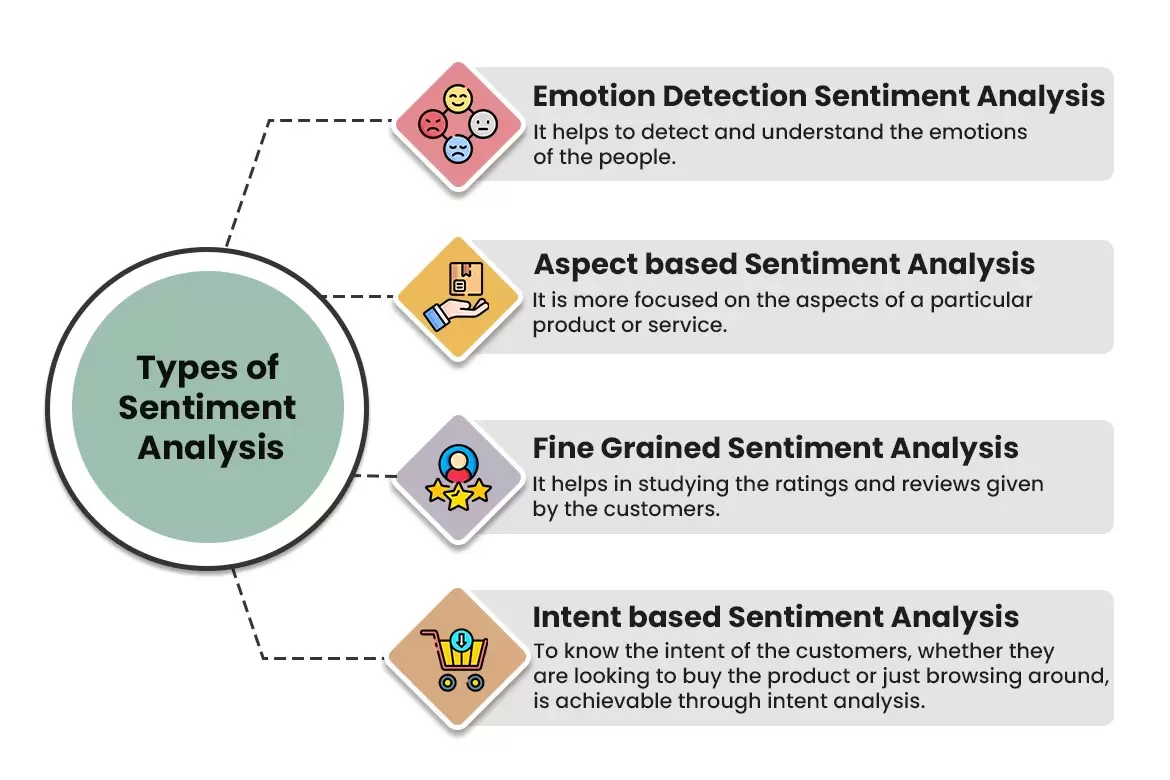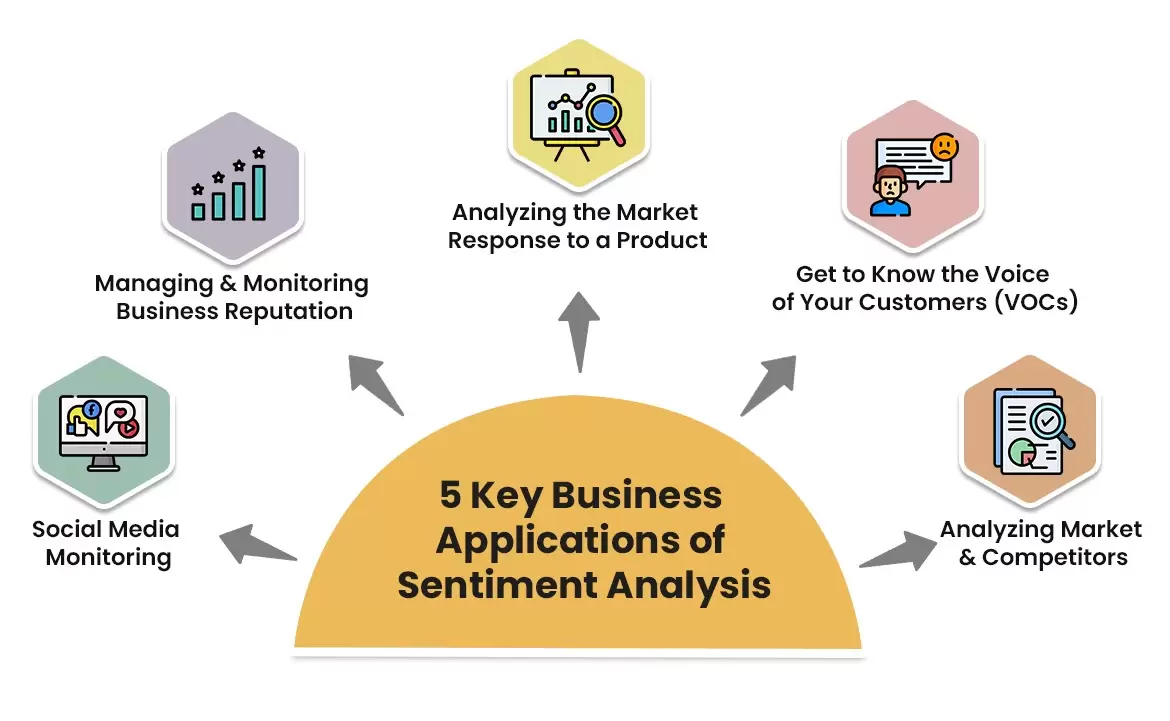
Sentiment Analysis has become vital for businesses to know how their brand is perceived in the marketplace. There is a misconception that Sentiment Analysis is important only for big brands like Nike or KFC and the like. Actually, it has proven to be important even for small businesses. For instance, consider a company launching a new product or service, sentiment analysis can mine competitors’ products, brand keywords, and customer’s needs in their product niche. The use cases are many for both small and large businesses.
What is sentiment analysis?
Sentiment is all about emotions and opinions and what people are saying and that is why it is also known as opinion mining. AI is often considered deficient when it comes to emotions so it appears a paradox that AI powers sentiment analysis. It achieves this in a mathematical way by using Natural Language Processing to analyze text, video/audio on the internet, or from emails and surveys.
In fact, sentiment analysis on videos is still a new field in opinion mining. Since it fundamentally relies on text analysis, even videos or rather the audio has to be converted to text using NLP and then analyzed.
However, accurately classifying text is difficult because often humans use the same term to mean different things and so context is important. For example, you made an important presentation to a new client that has not gone well. As you return home a bit dejected, a little child runs by you and stops to give you a flower. Immediately you feel a bit better and say “I really needed this today” – an expression of happiness. If it went the other way and you slipped down the stairs as you exit from work and you cry “I really needed this today” – it is a cry of frustration. This is what is sentiment analysis in a nutshell – understanding the emotions behind the words.In sentiment analysis algoritms, machines have to be trained to analyze language in the same way the human mind does and that includes understanding the subjective nature of text or opinions. This requires large volumes of data to train the ML models for sentiment analysis.
Sentiment analysis in a nutshell – understanding the emotions behind the words.
In recent years, sentiment analysis algorithms have become easier to implement because there is crowd-sourced human-labeled data available along with domain-specific expertise.

Sentiment Analysis Statistics
The latest sentiment analysis data give a clear insight into how this technology is gaining strength in recent years.
- In 2020, 54% of companies said they were using sentiment analysis to look at reviews and social posts to understand customer sentiment. In 2023 it is expected to grow to 80% (Bain&Company).
- Artificial neural networks were able to reach 85% accuracy in understanding the sentiment of text analysis.
- The US leads in revenue share in the global sentiment analysis market (Fortune Business Insights)
- Customer sentiment statistics show the difference between assumption and reality. More than 50% of businesses feel that their customers have a good sentiment about their brand but only 15% of customers actually agree.
Why is sentiment analysis more important today than ever before?
Real-life examples
Customers’ opinions have always mattered for every business. The difference is that now, more people are sharing their opinions on social media than ever before and their opinion reaches more people than previous word of mouth. Data is out there, not only about your own business but also about your competitors. This wealth of knowledge can be used to tailor products as well as improve customer experience.
Sentiment analysis in business applications has proven to improve customer loyalty and retention by improving service outcomes.
Here are two real-life examples of sentiment analysis in action:
The first one goes back to 2018, when sportswear retailer, Nike, wanted to sponsor NFL player, Colin Kaepernick. Most will remember him for ‘taking a knee’ when the US national anthem was playing. Many criticized him for his action, including then US President, Donald Trump. Nike knew that they were taking a gamble and it was important to keep tabs on public opinion. They used sentiment analysis to gauge the reaction. At first, the response was negative and there were many #boycottNike hashtags. However, this soon changed to positive sentiments and it was reflected in increased purchase intent.
Nike is a giant organization but there are examples of startups and new entrants into the market who have used sentiment analysis.
This example comes from a new healthy snack food company that was making an entry into the American market. They wanted to know what people usually preferred to snack on and what the thought associated with the word “snack” was. They wanted the sentiment analysis data insight to be completely unbiased so they left the questions open-ended. They ran a survey that got thousands of replies. Text analysis of the data gave an insight into which snack companies people mentioned most frequently and this helped the company to identify its competitors and create marketing campaigns for its product rollout that targeted specific segments.

The lines of business that can benefit from Sentiment Analysis
Data rules. Gleaning information from scattered text data and bringing it together in a structured format provides benefits in various business functions. Some of these lines of business are…
Healthcare practices: Patient sentiment analysis is the process of measuring the patient’s perception of the care and treatment they receive at their health practice. Comments like “I waited for over an hour” can give actionable insights on where to improve.
Brand reputation management: Opinion mining is particularly important for organizations that have considerable online chatter about their brand. It helps to identify possible PR disasters before they can blow up.
Voice of the employee: This is important for organizations with a high attrition rate or have specialists whose departure can adversely affect the company. By analyzing what employees are saying, companies can strategize to improve the work environment.
Voice of the customer: We have already spotlighted the importance of opinion mining for improving the customer experience. Data fr0m different sources can be categorized so that companies can identify recurring concerns or what is working best for their customers and leverage it further.
Call center monitoring: Companies with large call centers essentially need to have sentiment analysis implemented. Companies can analyze how customer satisfaction can vary by product as well as call center (if they have many locations). Call duration along with speech recognition technology can detect customer emotions and detect recurrent problems.
Analyzing the market and competitors: Every business has numerous competitors and recognizing gaps as well as strengths used to be provided by market researchers. Now sentiment analysis can do that for your organization.
All in all, sentiment analysis has many use cases and every business in this digital age needs to leverage the power of data even if it is scattered on the world wide web. Companies, like iTech who have build numerous first of its kind AI solutions and with a strong multi-industry expertise can help you get on board with AI powered solutions.

